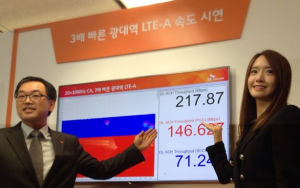 From a technical standpoint, an essential LTE patent is a patent that relates directly to technology that is strictly required to meet the technical specifications of the LTE standards. This can differ from commercial standpoint of what an essential LTE patent is, as many a times technologies and procedures that are not strictly defined in the LTE standards and specifications are unavoidable in the development and manufacture of an LTE-related product. For example, components of 2G/3G communications technology may not be defined in 4G LTE standards but from a practical standpoint would be required in next-generation devices since much of the new technology is built on the predecessor.
From a technical standpoint, an essential LTE patent is a patent that relates directly to technology that is strictly required to meet the technical specifications of the LTE standards. This can differ from commercial standpoint of what an essential LTE patent is, as many a times technologies and procedures that are not strictly defined in the LTE standards and specifications are unavoidable in the development and manufacture of an LTE-related product. For example, components of 2G/3G communications technology may not be defined in 4G LTE standards but from a practical standpoint would be required in next-generation devices since much of the new technology is built on the predecessor.
The next-generation LTE devices will most likely have performance and operability features that will be expected by users. As a result, companies with large patent portfolios will often view their IPR from a commercial standpoint rather than a purely technical one.
FRAND stands for Fair, reasonable, and non-discriminatory as set by the standards body. The goal of FRAND is to promote a competitive environment and prevent unfair licensing agreements. Since device manufacturers would like to adhere to standards such as LTE, the licensing of patents that are essential in the LTE standards becomes an unavoidable requirement.
Fair: Licensing terms must not be anti-competitive; must not force licensees to purchase unwanted bundled packages or force licensees to offer their patents for free
Reasonable: Royalty rate terms for a patent must be reasonable when viewed as a standalone agreement but also when viewed in aggregate for a standard. So for the LTE standards, there will be a limit to the aggregate royalty rate that device manufacturers will be expected to pay.
Non-discriminatory: The licensee is allowed to charge different royalty rates for patents based on the licensee’s profile, volume discounting, etc.; however, licensors must provide the same fundamental conditions and access to patents to those wishing to obtain them. The intent is so that new players hoping to enter a particular industry should not be stopped from competing on similar terms.
With this the LTE Standards are accepted to have a deep penetration across various markets to provide High Speed Mobile Broadband Services.